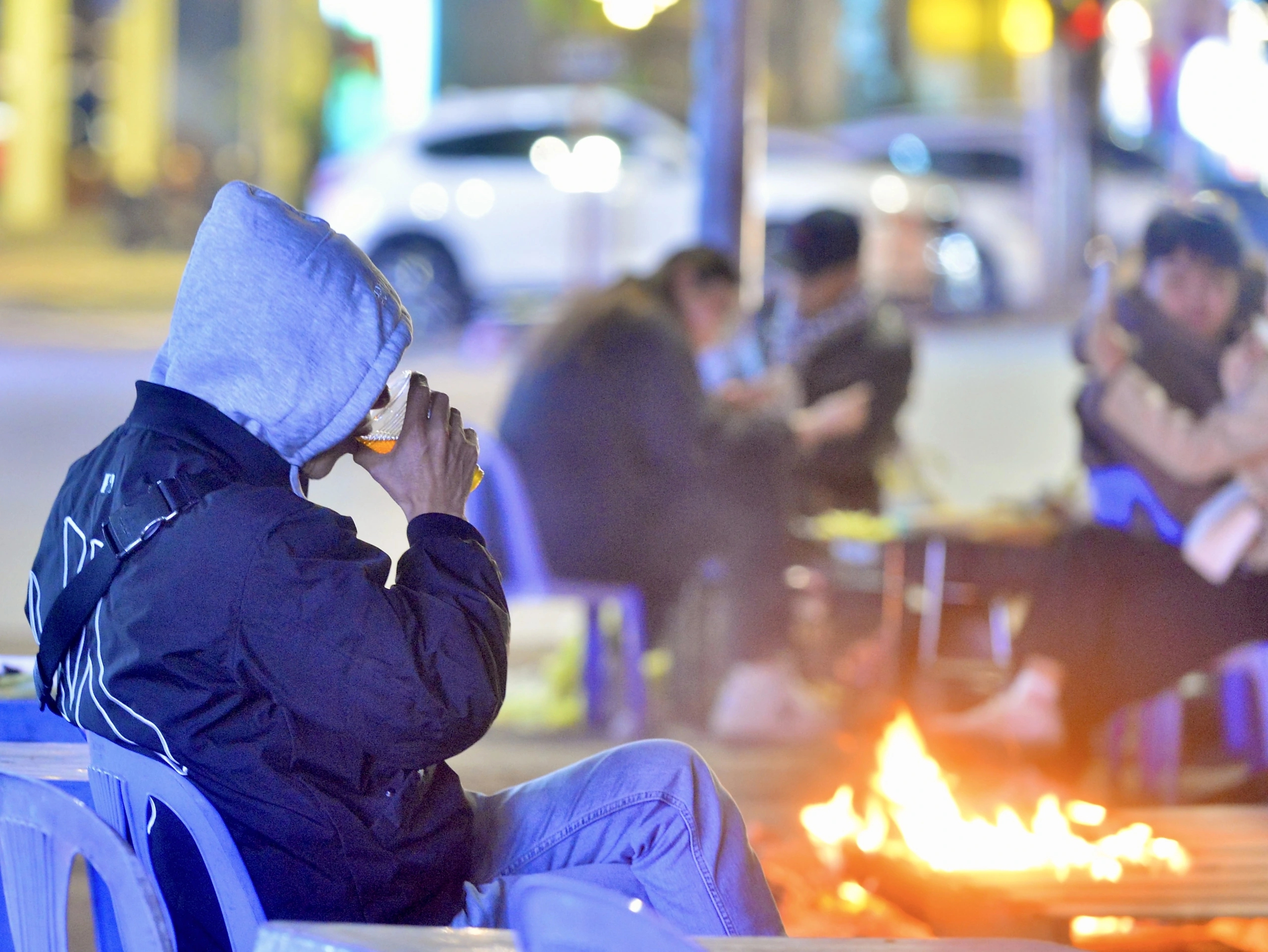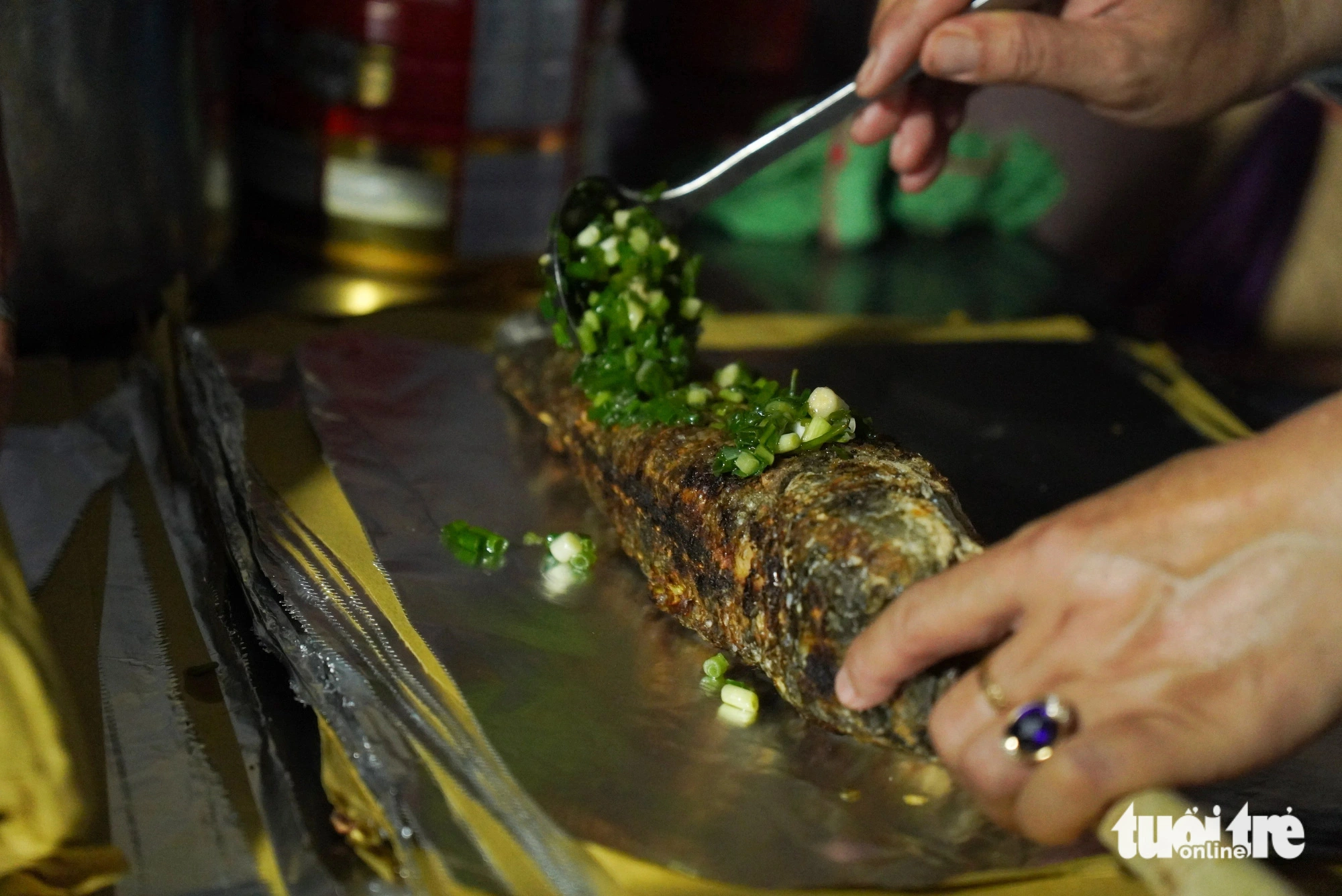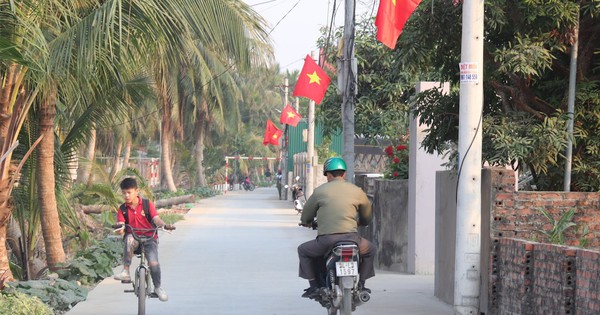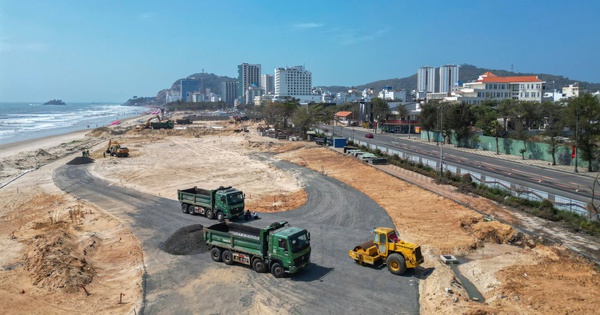According to the latest cold air information from the National Center for Hydro-Meteorological Forecasting, this afternoon (February 7), cold air has affected most of the Northwest and North Central regions. In the Gulf of Tonkin, there are strong northeast winds of level 6-7, gusting to level 8.
Latest cold air news
From the night of February 7, this cold air mass will continue to affect the Central Central region, then affect some places in the South Central region. Northeast wind inland will strengthen to level 3, coastal areas level 3-4, some places will have gusts of level 6.

Latest cold air news: Detailed developments of cold air this weekend, how long will this strong cold air wave in the North last? Photo: Thanh Nien
In the North, the weather is very cold; in the North Central region, the weather turns very cold; in the area from Quang Binh to Hue, the weather turns very cold, with some places being very cold. The lowest temperature during this cold spell in the North is generally 9-12 degrees Celsius, in mountainous areas 5-8 degrees Celsius, in high mountainous areas below 3 degrees Celsius; in the North Central region, it is generally 11-14 degrees Celsius, in the area from Quang Binh to Hue, it is generally 14-16 degrees Celsius.
Hanoi area: very cold weather. The lowest temperature in this cold air mass is commonly 10-12 degrees.
At sea: in the Gulf of Tonkin, the Northeast wind is strong at level 6, sometimes at level 7, gusting to level 8-9, rough seas, waves 2.0-4.0m high. In the North East Sea (including the waters of the Hoang Sa archipelago), the Northeast wind is strong at level 7, especially in the Northeast, sometimes at level 8, gusting to level 9-10, rough seas, waves 5.0-7.0m high.
The sea area from Quang Tri to Phu Yen, from Ba Ria Vung Tau to Ca Mau and the eastern sea area of the South China Sea (including the eastern sea area of Truong Sa archipelago) has northeast winds gradually increasing to level 6, gusting to level 7-8, rough seas, waves 4.0-6.0m high.
The sea area from Khanh Hoa to Binh Thuan, the area between the East Sea and the western sea area of the South East Sea (including the sea area west of Truong Sa archipelago), the Northeast wind gradually increases to level 6, sometimes level 7, from February 8 increasing to level 7, gusting to level 8-9, rough seas, waves 5.0-7.0m high.
| Forecast time | Area of influence | Lowest temperature ( o C) | Average temperature ( o C) |
|---|---|---|---|
| Night of February 7 and February 8 | North | 9-12, mountainous areas 5-8, high mountainous areas in some places below 3 | 12-14; mountainous areas 10-12; Lai Chau, Dien Bien: 14-16 |
| North Central Coast | 11-14 | 13-15 | |
| Quang Binh to Hue | 14-17 | 16-18 | |
| Night of February 8 and February 9 | North | 9-12, mountainous areas 5-8, high mountainous areas in some places below 3 | 12-14; mountainous areas 10-12; Lai Chau, Dien Bien: 14-16 |
| North Central Coast | 11-13 | 13-15 | |
| Quang Binh to Hue | 14-16 | 15-17 |
The widespread cold spell in the North and North Central provinces is likely to last until around February 10.
Due to the influence of cold air strengthening combined with strong currents in the upper westerly wind zone, from the night of February 7 to the morning of February 8, the Northern region and Thanh Hoa and Nghe An will have rain; from the night of February 7 to 9, the area from Ha Tinh to Khanh Hoa will have rain, showers, locally heavy rain and thunderstorms.
The mountainous areas of the North are likely to experience snow and ice. Thunderstorms are likely to produce tornadoes, lightning and strong gusts of wind.
Strong winds and large waves at sea can affect the operation of ships and other activities. Severe cold, frost, snow and ice can affect livestock and poultry; greatly affect the growth and development of crops.
Thunderstorms accompanied by tornadoes, lightning and strong gusts of wind can affect agricultural production, cause trees to fall, damage houses, traffic works and infrastructure.
Localized heavy rains can cause flooding in low-lying areas; flash floods in small rivers and streams, and landslides on steep slopes.
How long will this cold spell in the North last?
According to the National Center for Hydro-Meteorological Forecasting, over the weekend, Hanoi will be affected by an intensified cold front, causing severe cold accompanied by drizzle. In particular, on the night of February 7 and the morning of February 8, the temperature may drop sharply. The peak of severe cold: On the night of February 7 and the morning of February 8, the lowest temperature may drop to 10 - 11°C.

Latest cold air news: Peak of severe cold: On the night of February 7 and morning of February 8, the lowest temperature may drop to 10 - 11°C.
In addition, the northeast wind on land can reach level 3, coastal level 3-4, and strong winds of level 6 in the sea. The cold air will continue to spread to the provinces of the Northeast, Northwest, North Central, Central Central and some areas of the South Central. The lowest temperature in the North is generally from 9-12°C, in mountainous areas from 5-8°C, in high mountainous areas below 2°C, with the possibility of frost and frost. This cold spell is forecast to last until February 10.
Due to the influence of cold air combined with high-altitude westerly winds, the Northern region and Thanh Hoa continue to have scattered rain. People should pay attention to keeping warm and be on guard against extreme weather events.
According to the National Center for Hydro-Meteorological Forecasting, the cold air situation is expected to last until March 2025, with severe cold mainly concentrated in February.
In 2025, heat waves are likely to occur at a level similar to the average of many years but not as severe and prolonged as in 2024.
Regarding storms and tropical depressions in the East Sea, the forecast number is equivalent to the average of many years. Specifically, there are expected to be about 11 - 13 storms and tropical depressions in the East Sea, of which 5 - 6 can directly affect the mainland.
Cold air is forecast to operate at the average level of many years, but there is still a possibility of severe cold in the period from January to March 2025. In particular, it is necessary to be on guard against strong cold air waves causing severe cold over a wide area, accompanied by frost and frost in the northern mountainous areas.
Heat waves are expected to appear from around the first half of March in the South and Central Highlands. The Northwest region and the mountainous areas of the Northwest Central region may start to experience heat waves from April, while the coastal areas of the Central region and the Northeast may experience heat waves from May onwards.
Source: https://danviet.vn/hot-khong-khi-lanh-manh-don-dap-troi-lanh-te-tai-nhet-do-giam-sau-mien-bac-bao-gio-moi-het-ret-20250207154848914.htm





















































Comment (0)